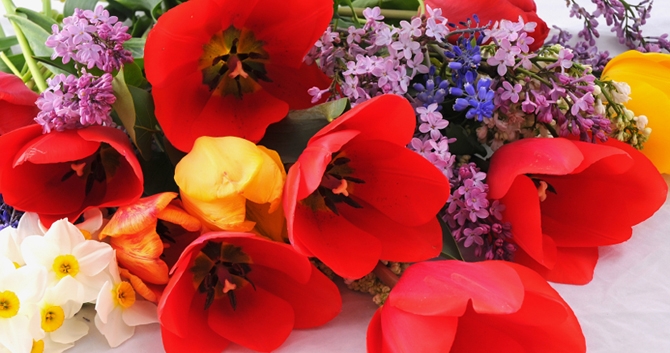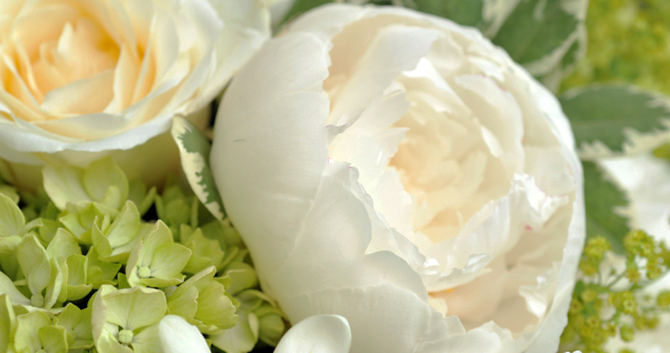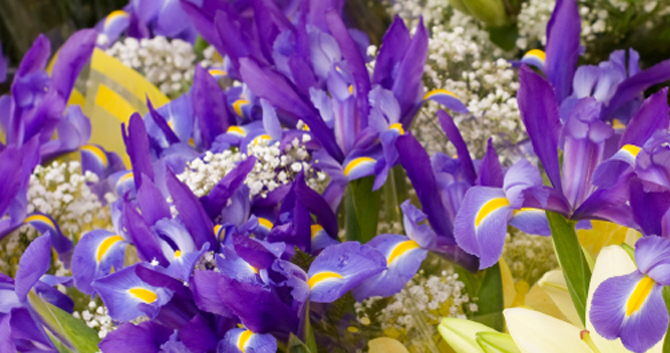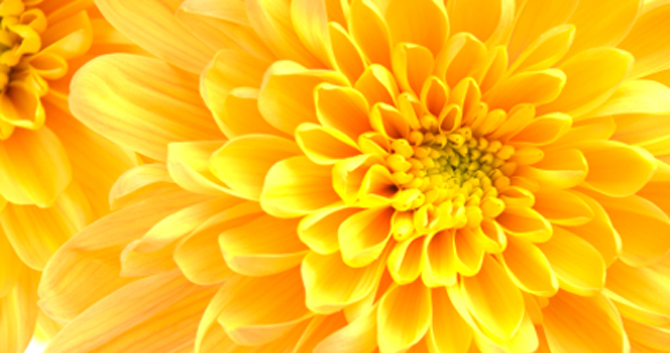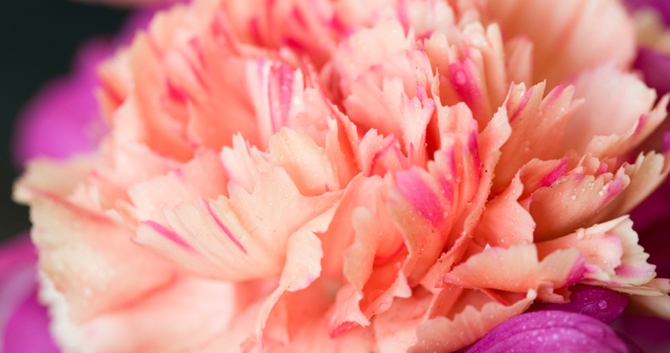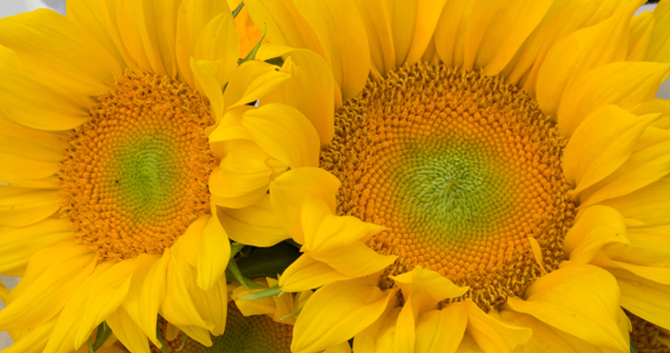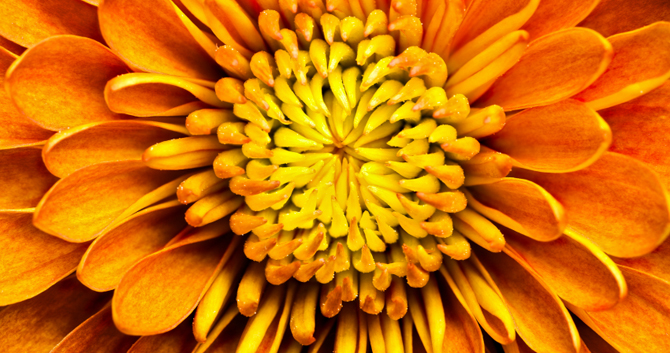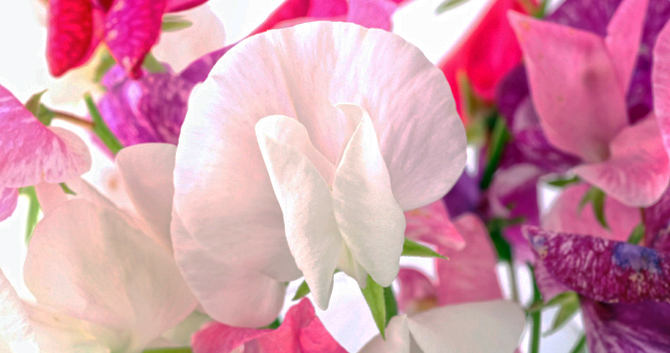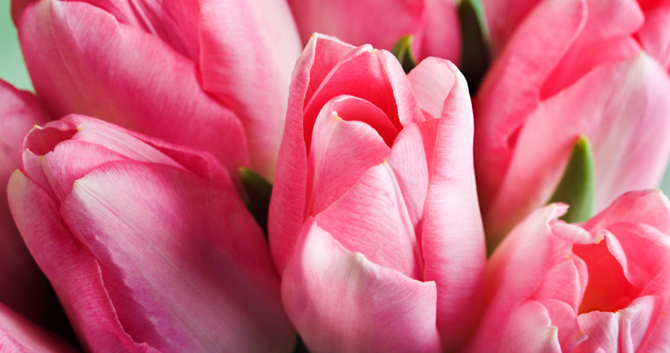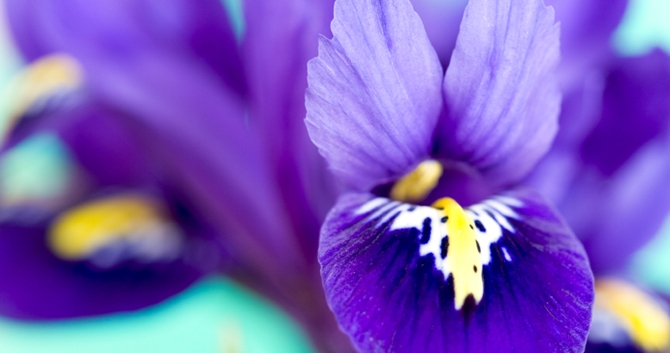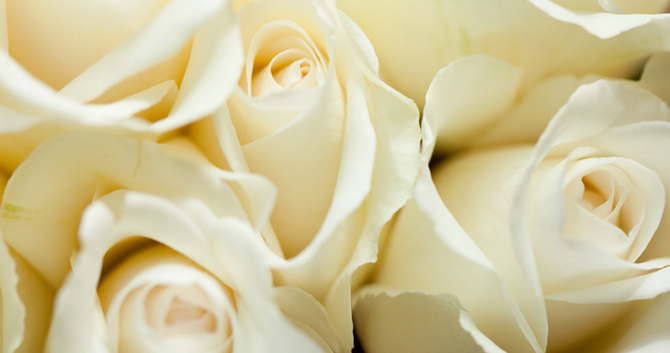Introduction
Everyone knows that flowers have meaning, but not everyone knows the meaning of flowers. Across many cultures over many centuries, flowers have become rich with symbolism, inspiring myths, fables, old wives tales, and secretive communications. They help express emotions we’re reluctant to say aloud and reinforce the sentiment behind a gift.
While any gift of flowers conveys thoughtfulness and brightens the day, certain blooms add another layer of meaning to bouquets, symbolizing love, friendship, joy, gratitude, or remembrance. Whether you’re celebrating a special occasion or treating yourself, the sentiment behind the blooms makes every bouquet of flowers more meaningful.
Love:
There are as many shades of love as there are shades of flowers. Red roses are the iconic flowers of love, but there are many other ways to express romantic feelings, whether it’s a new crush, true love, or a broken heart.
Secret admirer: red mums, gardenias
Love at first site: purple roses
True love: red roses
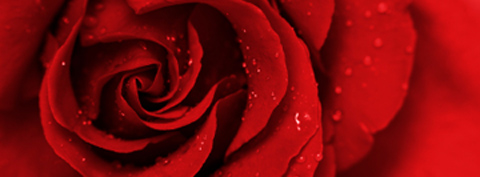 Red roses are unmistakable expression of enduring love and romance.
Red roses are unmistakable expression of enduring love and romance.
Perfect love: red tulips
Pure love: white roses, white carnations
Devotion: pink roses, lilies of the valley
Passion: yellow iris
Faithful love: forget-me-not, daisies, violets
Bashful: peony
Jealousy: yellow roses
Unrequited love: daffodils, morning glories
Slighted love: yellow chrysanthemums
Congratulations:
No matter the achievement, flowers are an uplifting way to celebrate graduations, promotions, and other milestones. Purple flowers of any kind traditionally represent accomplishment and distinction, while an armful of these beautiful blooms express congratulations, well wishes, and pride:
Good luck: bells of Ireland, jasmine
My compliments: iris
Prosperity and success: pink stargazer lilies, yellow poppies
Pride: amaryllis, orange tiger lilies
Seize the opportunity: hibiscus
Friendship:
In the words of Henry David Thoreau, “The language of friendship is not in words, but in meanings.”In the language of flowers, there are a number of blooms that symbolize the meanings of friendship, expressing loyalty, trust, admiration, and devotion. While yellow is the traditional color of friendship, the following flowers in any color are a thoughtful gift:
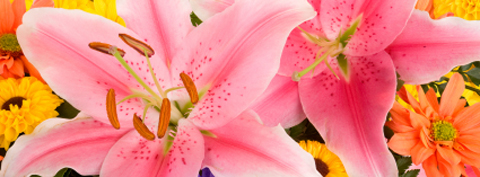 Pink stargazer lilies represent devotion, prosperity, and success
Pink stargazer lilies represent devotion, prosperity, and success
Friendship and devotion: alstroemeria, hydrangea, yellow roses
Cherished friendship: iris
Sweetness, trust, friendship: freesia
You are a wonderful friend: chrysanthemum
Admiration: red carnations
Loyalty: daisy
Gratitude:
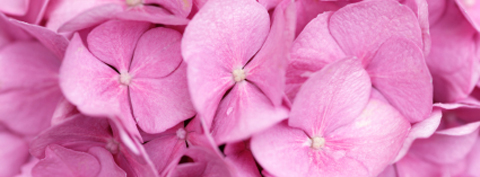 Hydrangeas are a beautiful way to express appreciation.
Hydrangeas are a beautiful way to express appreciation.
Everyone likes to feel appreciated, and a gift of flowers is a sure way of expressing gratitude and bringing a smile to someone’s face. If you struggle with writing thank-you notes, try sending these flowers to do the talking for you:
Appreciation: dark pink or peach roses, yellow lilies, hydrangea
Joy: bird of paradise
Brightness and radiance: yellow tulips
Get Well:
A gift of flowers can be revitalizing - lifting the spirits, brightening a room with color and fragrance, and conveying thoughtful wishes. Green flowers and foliage symbolize health and renewal, indoor plants help purify indoor air to create a healthy environment, and the following cut flowers offer a prescription for healing and recovery:
Get well: violet mums
Optimism: yellow daisies
Healing: peony
Serenity: blue iris
Comfort, tranquility: blue hydrangea
Sympathy:
During times of sorrow, flowers are a beautiful way to offer condolences when words fail us. White flowers have come to symbolize honor, reverence, and purity of the soul, while other flowers express comfort, farewell, peace, hope, and remembrance. Bouquets of favorite flowers, birth month flowers, or flowers symbolic of patriotism, admiration, and friendship can also create a personal tribute with special meaning.
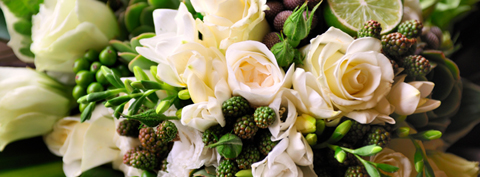 During times of sorrow, flowers express condolences when words fail us.
During times of sorrow, flowers express condolences when words fail us.
Sympathy: white stargazer lilies
Consolation: poppies
Sorrow, grief: white chrysanthemums, purple hyacinth, dark crimson roses, marigolds
Peace: white roses
Hope: iris, primrose, star of Bethlehem
Farewell: sweet peas
Remembrance: forget-me-nots, rosemary, pink carnations, white lilac
Patriotism: nasturtium
Admiration: red carnations
Special Events:
What celebration would be complete without tables transformed with spectacular blooms, entryways adorned with flowers, or vases filled with fragrant bouquets? Special occasions become memorable events with flowers that hold special meaning for the guest of honor and personalize the setting.
Birthday:
Since the times of the Romans, specific flowers have traditionally been given according to the month a person was born. These botanical equivalents of birthstones carry the symbolism and special meaning as follows:
January: carnations (fascination, admiration, beauty, gratitude)
February: violets (faithfulness, humility, and chastity)
March: daffodils (rebirth, new beginnings)
April: sweet peas (simplicity, modesty)
May: lilies-of-the-valley (sweetness, humility, hope)
June: roses (love, beauty, perfection, passion)
July: delphiniums (open heart, ardent attachment)
August: gladiola (sincerity, strength, integrity)
September: asters ( patience, trust, love, valor)
October: marigolds (sorrow, sympathy)
November: chrysanthemums (optimism, cheerfulness)
December: narcissus (respect, modesty, faithfulness) or poinsettias (good cheer, celebration, merriment)
New Baby:
One special delivery deserves another! Flowers send a warm welcome to newborns, introducing them to beauty and thoughtfulness. So many colors are appropriate for celebrating the new arrival (yellow denotes new beginnings, white evokes purity, and pink signifies youth and innocence). Other flowers for little ones include:
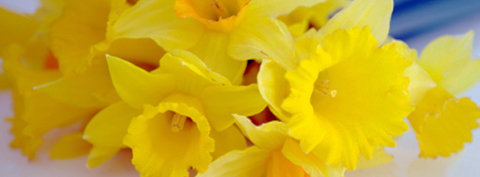 A gift of daffodils is said to ensure happiness - great for a newborn!
A gift of daffodils is said to ensure happiness - great for a newborn!
Purity and gentleness: daisies
Happiness:A gift of daffodils is said to ensure happiness
Tiny beginning of great things: aster
Mother’s Day:
Inspired by Anna Jarvis, a Philadelphia schoolteacher who wanted to honor the memory of her mother, Mother’s Day has been a national holiday since 1914. Anna celebrated by handing out white carnations, her mother’s favorite flowers, representing purity, patience, and sweetness. While carnations of all colors remain the traditional holiday flower, lilies are another way to express your admiration, devotion and appreciation.
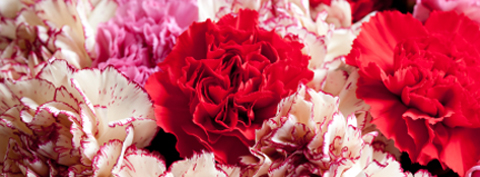 Carnations are the iconic flower of Mother's Day and the November birth flower
Carnations are the iconic flower of Mother's Day and the November birth flower
Admiration: red carnations
"I'll never forget you": pink carnations
Devotion: pink stargazer lilies
Sweetness, humility, hope: lilies of the valley
Anniversary:
The tradition of giving anniversary flowers began as a way to celebrate milestones in a lifelong commitment. Just as love matures over time, anniversary flowers and their meaning change each year as young love deepens into a lifetime of shared experiences.
1st: carnations (red for admiration, white for pure love, pink for I’ll never forget you)
2nd: lilies of the valley (sweetness, humility, hope)
3rd: sunflowers (warmth, adoration, loyalty)
4th: hydrangeas (gratefulness, pride)
5th: daisies (gentleness)
6th: calla lilies (transition, growth)
7th: freesias (trust, fidelity)
8th: lilacs (recollections of young love)
9th: bird of paradise (joy)
10th: daffodils (new beginnings)
11th: tulips (love)
12th: peonies (romance, happy marriage)
13th: chrysanthemums (optimism, perfection)
14th: orchids (affection)
15th: roses (true love)
20th: asters (patience, wisdom, good fortune)
25th: iris (faith, hope, wisdom, promise)
30th: lilies (devotion, pride, beauty)
40th: gladiola (strength sincerity, integrity)
50th: yellow roses (long prosperous marriage) or violets (faithfulness, commitment, virtue)

